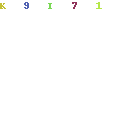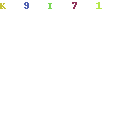While the Uddhav Thackeray led-Maharashtra Vikas Aghadi (MVA) is keen on building an integrated Metro car shed at Kanjurmarg, a series of details that have emerged, reveals complexities involved in doing so.
According to a 2017 written reply by the ministry of commerce and industry to the then member of Parliament from Mumbai North-East and BJP leader Kirit Somaiya, the Centre had received a complaint about a private builder of agreeing with the Garodias (the said leaseholder) to develop salt-pan lands at the Arthur and Jenkins Salt Works, which spreads across 500-acres on both sides of the Eastern Express Highway (EEH).
The state government is keen on building an integrated Metro car shed in 102-acres of this land.
Further in 2019, the Mumbai Metropolitan Region Development Authority (MMRDA), in an undertaking to the ministry of commerce, had also stated that it requires 37.32 hectare of Kanjurmarg for the Metro car depot and “MMRDA undertakes to pay the market value fixed by the department for the promotion of industry and internal trade (DIPP),” for that land.
The reply by the Centre also states that the said lease was terminated in 2004, post which, it challenged in the court.
The reply further states, “A representation was received in December 2016, wherein, it was indicated that 1,700 acres of land situated mainly in eastern suburban Mumbai, could be made available for affordable housing and infrastructure projects.”
The salt-pan tussle between the Centre and the state dates back to the 1980s.
A reply in the year 2000 by the government also states that the “Ministry of industry, department of industrial development issued orders dated January 9, 1986, December 30, 1987, and February 22, 1990, transferring 5,378 acres (approximately) of lands in Greater Bombay, on `as is where is` basis with all the assets and liabilities, to the ministry of urban development, for use as considered appropriate.” Further communication also reveals that between 2000-2003, both the Centre and the state were also looking at jointly developing these lands for mass housing projects, development of public amenities, resettlement of slums and tourism in Mumbai.
Shapoorji Pallonji said that in 2009, Maheshkumar Garodia had approached the company for jointly developing the 500-acre land.
It also states that it had submitted proposals to the state and central government for necessary approvals in 2013 and is also continuously following-up with the proposals. It also states, “The Government of India and the government of Maharashtra have in principle agreed to utilise the salt pan lands for urban development. Moreover, the subject lands have been reserved for housing in terms of the development plan for Greater Mumbai, for the years 1967 and 1991.”
The Garodia group said, “The concerned person who is the lessee of the subject property is travelling and our office is also closed till January 3, due to the holidays and pandemic. (We) Would therefore request you to kindly give us 2-3 days to revert in the matter.”
In 2014, however, the state government issued an order in respect of 2,978 acres of the salt pan as belonging to Maharashtra, which was challenged by the salt commissioner before the Konkan divisional commissioner. In 2018, the then revenue minister had also issued an order declaring various salt-pan areas as belonging to the state, which was challenged by the Centre in the court.
“The Fadnavis-government knew the legal and technical complexities involved in building a car shed at Kanjurmarg. Therefore, to avoid any delays to the project, Aarey was considered appropriate. The MVA government must immediately re-start works at Aarey to avoid further delays to the project,” said Kirit Somaiya, senior Bharatiya Janata Party (BJP) leader.
A 2015 reply by the Central government also states that as per a 2010 report of the Mumbai Metropolitan Region Development Authority, 1206 hectares of salt pan lands comes under Coastal Regulation Zone (CRZ), of which 867 hectares is in the eastern suburbs of Nahur, Mulund, Kanjurmarg and Bhandup. A senior official from MMRDA said, “The Kanjurmarg land should be handed over for public good as it will be catering to four different Metro lines.”
“The Fadnavis-government knew the legal and technical complexities involved in building a car shed at Kanjurmarg. Therefore, to avoid any delays to the project, Aarey was considered appropriate. The MVA government must immediately re-start works at Aarey to avoid further delays to the project,” said Somaiya. A 2015 reply by the Central government also states that as per a 2010 report of the Mumbai Metropolitan Region Development Authority, 1206 hectares of salt pan lands comes under Coastal Regulation Zone (CRZ), of which 867 hectares is in the eastern suburbs of Nahur, Mulund, Kanjurmarg and Bhandup.
A senior official from MMRDA said, “The Kanjurmarg land should be handed over for public good as it will be catering to four different Metro lines.”
Zoru Bhathena, an environmental activist said, “The Fadnavis-government created these legal complexities. The depot land does not come under salt-pan land and belongs to the state government. There is no complication involved.”
Source: https://www.hindustantimes.com/mumbai-news/mumbai-metro-car-shed-row-developer-leaseholder-had-agreed-to-build-on-the-plot/story-qeAh0GrW2dShuFNQ1ZbvBN.html


